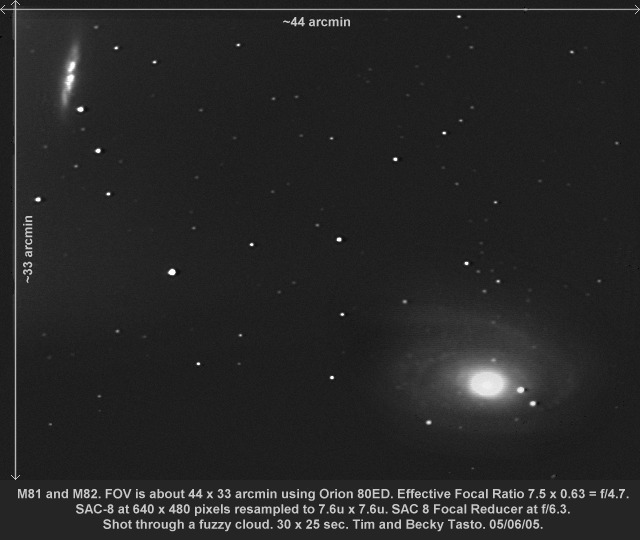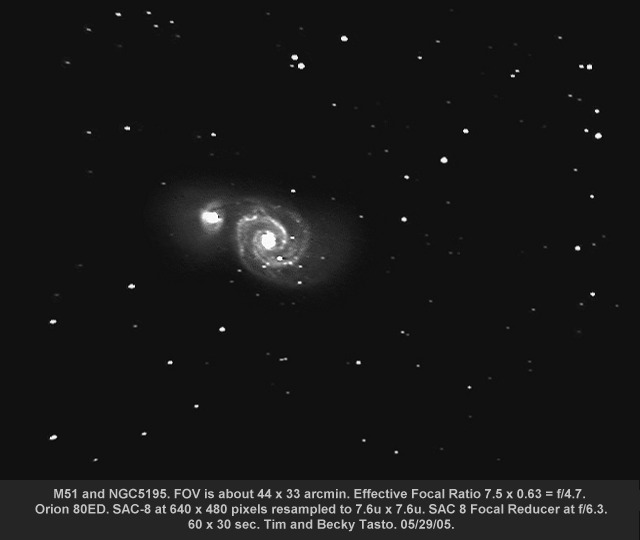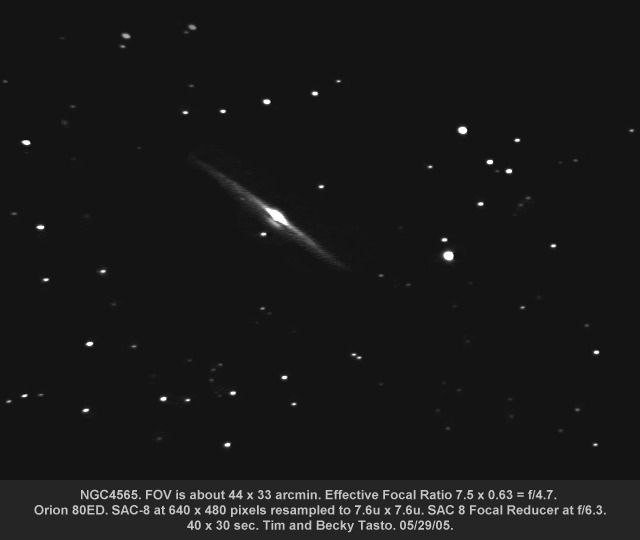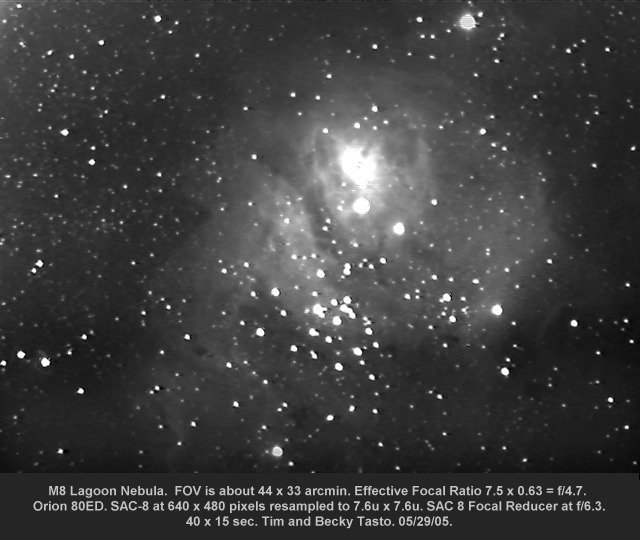| Tim and Becky's Astrophotography with the Orion ED 80 (80 ED?) APO Refractor Telescope
(Please be patient while the images load) (Adjust brightness and contrast on your monitor for best viewing) This page shows our efforts at wide-field imaging using an Orion 80ED APO refractor with a native focal ratio of f/7.5. A SAC-8 with a SAC f/6.3 Focal Reducer was used to arrive at an effective Focal Ratio of 7.5 * 0.63 = f/4.7. Our impression of the Orion 80ED is that we like it...a lot! We wanted a scope that would produce a wide-field, and the 80ED really delivered nicely. In addition, this scope was given to me as an anniversary gift from my wife, Becky...thanks Becky! Our Orion 80ED currently resides on a Meade LXD55 mount. Smaller aperture scopes (i.e. 80mm) won't typically show as much detail as larger aperture setups. However, smaller aperture with a nice wide field helps maintain the "outer space" context of the object and creates a perspective as if you were approaching the object in a space ship. The wide field provides a new and very interesting view of deep space objects. Color Images with the Orion ED 80 and Canon Digital Rebel XTi:First Images with the Orion ED 80: M81 and M82. This is a "first light" shot with our new Orion 80 ED, which looks like it is going to work out great for wide-field shots. This was shot through a fuzzy cloud, but both galaxies still show adequately in a single frame without a mosaic.  Below is M51 with the
Orion 80ED and SAC-8. The night was clear and the seeing very good...no
clouds to battle this time and what a field of view!
   Return
to Deep Space Imaging and Astrophotography Main Page
All images copyright (c) Tim Tasto and Becky Tasto Orion ED 80 ED M8 NGC4565 M51 M81 M82 XTi Canon Digital Rebel
|


